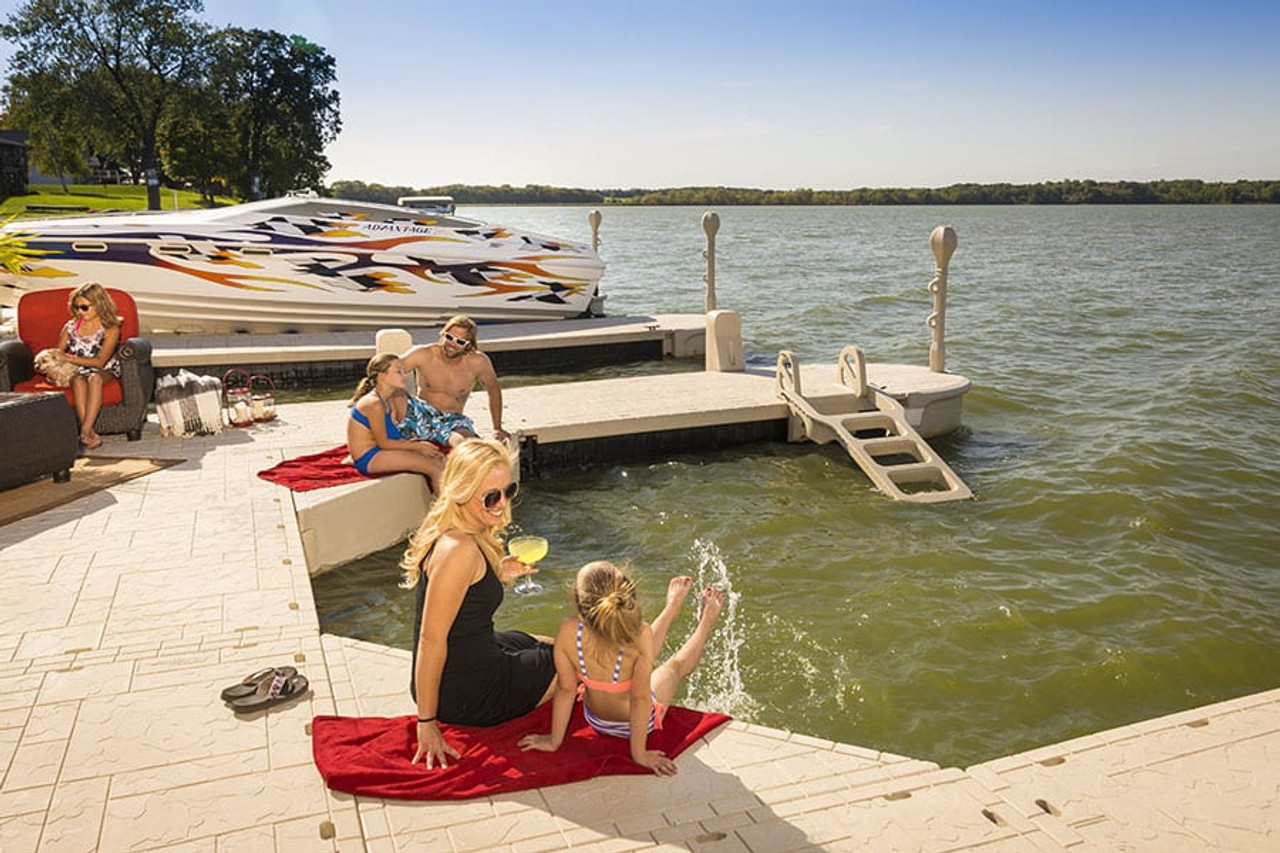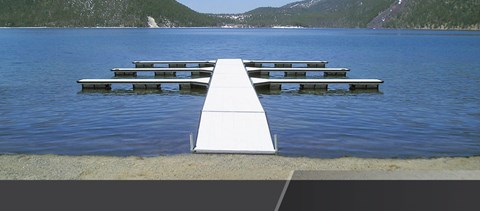Ingenious Floating Docks: The Future of Waterfront Gain Access To and Leisure
Upgrade Your Beachfront With Long Lasting Floating Docks
Updating your waterside with sturdy floating docks can significantly enhance both capability and looks, providing a versatile option for numerous water activities. With a range of materials readily available, consisting of low-maintenance options and conventional wood, picking the best dock can match your individual design and meet useful requirements.
Advantages of Floating Docks
Floating docks offer a wide variety of benefits that improve their charm for different maritime applications. One of the primary benefits is their flexibility to transforming water degrees - dock company. Unlike typical set docks, floating docks fluctuate with the tide, guaranteeing consistent accessibility for watercrafts and boat no matter environmental problems. This attribute substantially decreases the risk of damages to vessels, as they stay safely moored also throughout fluctuations in water deepness.
Furthermore, floating docks are much easier to install and transfer, providing adaptability for momentary or seasonal usage. Their modular layout permits personalization to fit specific demands, whether for personal marinas, domestic beachfronts, or business applications.
Furthermore, floating docks create minimal disruption to the aquatic setting, protecting regional communities and reducing the chance of erosion. They additionally offer boosted safety and security and stability for customers, as their resilient nature supplies a much more flexible surface than rigid frameworks.
In addition, floating docks can promote a diverse array of activities, such as fishing, swimming, and entertainment boating, making them a useful property for waterside development. Their versatility and functionality make floating docks a recommended choice for a selection of marine tasks.
Picking the Right Materials
Choosing ideal materials for floating docks is essential to their durability, efficiency, and overall performance. When selecting products, consider aspects such as ecological exposure, maintenance requirements, and architectural stability. Common materials include timber, plastic, light weight aluminum, and composite options, each offering distinctive benefits and downsides.
Wood, while aesthetically pleasing, calls for normal upkeep to stop rot and degeneration. Pressure-treated wood can enhance toughness, however it may still give in to water damage with time. Plastic drifts, commonly made from high-density polyethylene, are resistant to corrosion and call for marginal upkeep, making them an attractive choice for low-maintenance applications.
Light weight aluminum is one more practical option, recognized for its stamina and lightweight residential properties. It is resistant to rust and can hold up against extreme weather, although it might be much more expensive than various other materials. Compound products combine the very best attributes of wood and plastic, offering a resistant and low-maintenance alternative that resembles the look of wood without the associated downsides.
Eventually, the choice of product need to line up with the intended usage, environmental considerations, and spending plan restrictions, guaranteeing a long lasting and functional floating dock that fulfills your details demands.
Installment Refine Introduction
The effective setup of a floating dock relies upon cautious planning and implementation, making sure that it runs properly in its desired atmosphere. The primary step includes examining site conditions, including water deepness, shoreline functions, and dominating weather patterns, which will inform the dock layout and anchoring system.
Following the site analysis, the next phase is to prepare the floating dock components. This consists of setting up the frame, protecting floats, and connecting any needed hardware. It is vital to guarantee that all links are robust and water-resistant to withstand marine problems.
When the dock is constructed, the installation procedure begins with placing the dock in the water. This can involve a crane or various other training devices, especially for bigger frameworks. Correct positioning is essential for performance and safety and security.

Upkeep Tips for Long Life
Normal maintenance is crucial for ensuring the you could try here durability and optimal efficiency of a drifting dock. To achieve this, begin with regular evaluations at least twice a year, concentrating on the stability of the dock's framework, including the flotation protection devices and linking equipment. Try to find indicators of damages, deterioration, or wear, and attend to any problems promptly to stop further damage.
Cleaning is one more critical element of click here now upkeep. Remove debris, algae, and barnacles from the dock's surface area to prevent slippery problems and keep aesthetic charm. Make use of a soft brush and a mild detergent to prevent harming the dock's materials.
Furthermore, guarantee that the dock is appropriately secured and safeguarded to withstand seasonal modifications in water degrees and climate conditions. Inspect the anchoring system for stability and make modifications as essential.
Enhancing Your Outdoor Aesthetic
To produce an aesthetically enticing exterior space, integrating a drifting dock can significantly enhance the overall aesthetic of your waterfront property. Floating docks are not only practical however can additionally work as a striking prime focus that complements the natural surroundings - floating docks. Offered in numerous products and designs, these docks can be customized to match your residential or commercial property's architectural style and landscape
The addition of ornamental aspects, such as integrated illumination or trendy barriers, better elevates the dock's visual appeal. Consider using natural timber coatings, which mix effortlessly with the atmosphere, or selecting modern materials like aluminum or composite decking that provide a smooth, contemporary look.
Strategically placing planters or seating areas on or around the dock can develop inviting spaces that urge leisure and pleasure of waterside sights. In addition, integrating shades and appearances that integrate with your landscape will certainly develop a natural visual throughout your exterior area.

Final Thought

Updating your waterfront with long lasting floating docks can significantly improve both capability and appearances, offering a functional service for numerous water activities. Unlike standard set docks, floating docks rise and autumn with the trend, ensuring constant access for boats and watercraft no matter of ecological conditions.Choosing proper products for floating docks is essential to their longevity, performance, and general performance.Once the dock is set up, the installment process article begins with placing the dock in the water.In recap, floating docks offer countless advantages, including adaptability to water degree modifications and a selection of material choices.